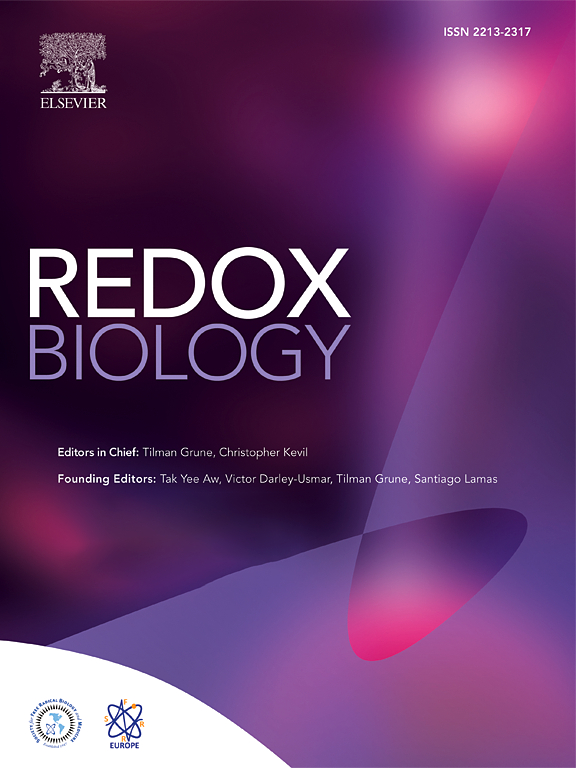Caged-hypocrellin mediated photodynamic therapy induces chromatin remodeling and disrupts mitochondrial energy metabolism in multidrug-resistant Candida auris
IF 10.7
1区 生物学
Q1 BIOCHEMISTRY & MOLECULAR BIOLOGY
引用次数: 0
Abstract
Candida auris is a fungal pathogen with frequent development of multidrug-resistance or pan-drug resistance. Currently, the treatment options for Candida auris are limited. Therefore, there is an urgent need for alternative therapeutic strategies. Antimicrobial photodynamic therapy (aPDT), which generates reactive oxygen species (ROS) through light-activated photosensitizers, has shown promise against C. auris; however, its molecular mechanism remains unclear. To investigate COP1T-HA-mediated PDT-induced genomic alterations, we constructed a 3D genome map of Candida species, which uncovered the reorganization of chromatin architecture in response to PDT treatment. Our data showed that low-dose PDT causes subtle local adjustments in chromatin topology, whereas high-dose PDT leads to more pronounced changes in A/B compartmentalization, topologically associating domain (TAD) organization, and chromatin looping associated with key genes related to mitochondrial energy metabolism. Confocal imaging confirmed that high-dose COP1T-HA-mediated PDT induces localized ROS accumulation near the nucleus and a temporally ordered cellular stress response. Furthermore, functional validation through QCR10, NDUFA5, and MP knockouts confirmed the essential roles of these genes in mitochondrial integrity, ATP synthesis, ROS homeostasis, and biofilm formation. Mutants showed altered mitochondrial membrane potential, intracellular pH imbalance, and enhanced glycolytic compensation, highlighting the impact of electron transport disruption on energy metabolism. This study provides the first comprehensive insight into COP1T-HA-mediated PDT-induced chromatin reorganization in C. auris and establishes a direct connection between 3D genome remodeling and fungal energy metabolism, offering a foundation for chromatin-targeted antifungal strategies.

笼状hypocrellin介导的光动力治疗诱导多重耐药耳念珠菌的染色质重塑和线粒体能量代谢紊乱
耳念珠菌是一种经常发生多重耐药或泛耐药的真菌病原体。目前,耳念珠菌的治疗选择有限。因此,迫切需要替代治疗策略。抗菌光动力疗法(aPDT)通过光活化光敏剂产生活性氧(ROS),已显示出治疗金黄色葡萄球菌的前景;然而,其分子机制尚不清楚。为了研究cop1t - ha介导的PDT诱导的基因组改变,我们构建了假丝酵母物种的三维基因组图谱,揭示了PDT治疗下染色质结构的重组。我们的数据显示,低剂量PDT会引起染色质拓扑结构的细微局部调整,而高剂量PDT会导致与线粒体能量代谢相关的关键基因相关的A/B区区化、拓扑相关结构域(TAD)组织和染色质环的更明显变化。共聚焦成像证实,高剂量cop1t - ha介导的PDT诱导细胞核附近的局部ROS积累和时间有序的细胞应激反应。此外,通过QCR10、NDUFA5和MP敲除的功能验证证实了这些基因在线粒体完整性、ATP合成、ROS稳态和生物膜形成中的重要作用。突变体表现出线粒体膜电位改变,细胞内pH失衡,糖酵解补偿增强,突出了电子传递中断对能量代谢的影响。该研究首次全面了解了cop1t - ha介导的pdt诱导的金黄色葡萄球菌染色质重组,并建立了3D基因组重塑与真菌能量代谢之间的直接联系,为染色质靶向抗真菌策略提供了基础。
本文章由计算机程序翻译,如有差异,请以英文原文为准。
求助全文
约1分钟内获得全文
求助全文
来源期刊

Redox Biology
BIOCHEMISTRY & MOLECULAR BIOLOGY-
CiteScore
19.90
自引率
3.50%
发文量
318
审稿时长
25 days
期刊介绍:
Redox Biology is the official journal of the Society for Redox Biology and Medicine and the Society for Free Radical Research-Europe. It is also affiliated with the International Society for Free Radical Research (SFRRI). This journal serves as a platform for publishing pioneering research, innovative methods, and comprehensive review articles in the field of redox biology, encompassing both health and disease.
Redox Biology welcomes various forms of contributions, including research articles (short or full communications), methods, mini-reviews, and commentaries. Through its diverse range of published content, Redox Biology aims to foster advancements and insights in the understanding of redox biology and its implications.
 求助内容:
求助内容: 应助结果提醒方式:
应助结果提醒方式:


